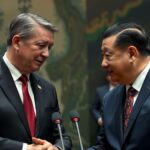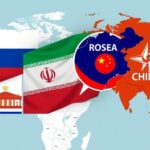2024 Yearender: India’s Diplomatic Victories and Challenges Ahead
The year 2024 saw India successfully negotiate a disengagement with China at friction points along the LAC, yet it faced ongoing challenges, including strained relations with Bangladesh and increasing influence from China among its neighbors. Additionally, preparations began for a potentially turbulent relationship with the U.S. under Donald Trump. The complexities of regional geopolitics will require India to adopt a proactive diplomatic strategy moving forward.
As 2024 came to a close, a notable understanding between India and China regarding disengagements along the Line of Actual Control (LAC) emerged as a significant diplomatic achievement for India. After a prolonged face-off in the Ladakh sector, an agreement was reached on October 21 to withdraw troops from the remaining friction points of Demchok and Depsang, signaling a potential shift towards de-escalation and the normalization of bilateral relations. However, the resolution is considered to be a work in progress, necessitating further negotiations on more complex issues such as ongoing border disputes and confidence-building measures.
While the recent developments with China provided India with some strategic relief, multiple challenges persist on both regional and global fronts. India faces diplomatic hurdles with neighboring countries, including Nepal and the Maldives, which have increasingly aligned with China, as well as an adversarial interim government in Bangladesh. The situation is exacerbated by internal conflicts in Myanmar and geopolitical tensions from the ongoing conflicts in West Asia and Ukraine.
With regard to relations with the United States, India is preparing for the return of Donald Trump, whose foreign policy approach is widely perceived as unpredictable. While India’s leaders note a historically positive relationship with Trump, concerns remain regarding possible retaliatory tariffs and the repercussions of his whimsical decision-making, a topic highlighted by diplomats familiar with U.S.-India ties.
In Bangladesh, the recent political upheaval brought about by student-led protests that ousted Prime Minister Sheikh Hasina has strained ties between the two nations. India had invested significantly in building a strong relationship with Hasina’s government, making the ascent of an interim administration seeking closer relations with Pakistan a troubling development from India’s perspective.
Given these complexities, the Indian external affairs ministry must navigate a tumultuous landscape that includes addressing the fallout from the “murder for hire” case involving Indian nationals in the U.S. alongside rising tensions from recent diplomatic expulsions with Canada. Experts anticipate that the year 2025 will require India to adopt a more proactive approach towards its neighbors and redefine its regional strategy as various geopolitical dynamics unfold across the South Asian terrain.
In 2024, India made diplomatic strides with the resolution of an extensive military standoff with China, but the country’s foreign policy faced numerous other challenges affecting its relationships with neighboring countries and key global powers. The shift in regional alliances, marked by strengthening ties with China among South Asian neighbors and a fluctuating geopolitical landscape with the U.S. under a potentially returning Trump administration, necessitated adjustments in India’s foreign policy strategies. The interplay of these factors underscores the complicated nature of maintaining stability and progress amidst evolving global circumstances.
In summary, 2024 represented both a pivotal achievement in India-China relations through disengagement at the LAC and a backdrop of complex challenges. Moving forward, India will need to address the ramifications of geopolitical shifts in its neighborhood while preparing for potential fluctuations in its relationship with the United States under the leadership of Donald Trump. A continued focus on robust diplomacy and strategic cooperation will be essential as India navigates its foreign policy landscape in the upcoming year.
Original Source: www.hindustantimes.com






Post Comment